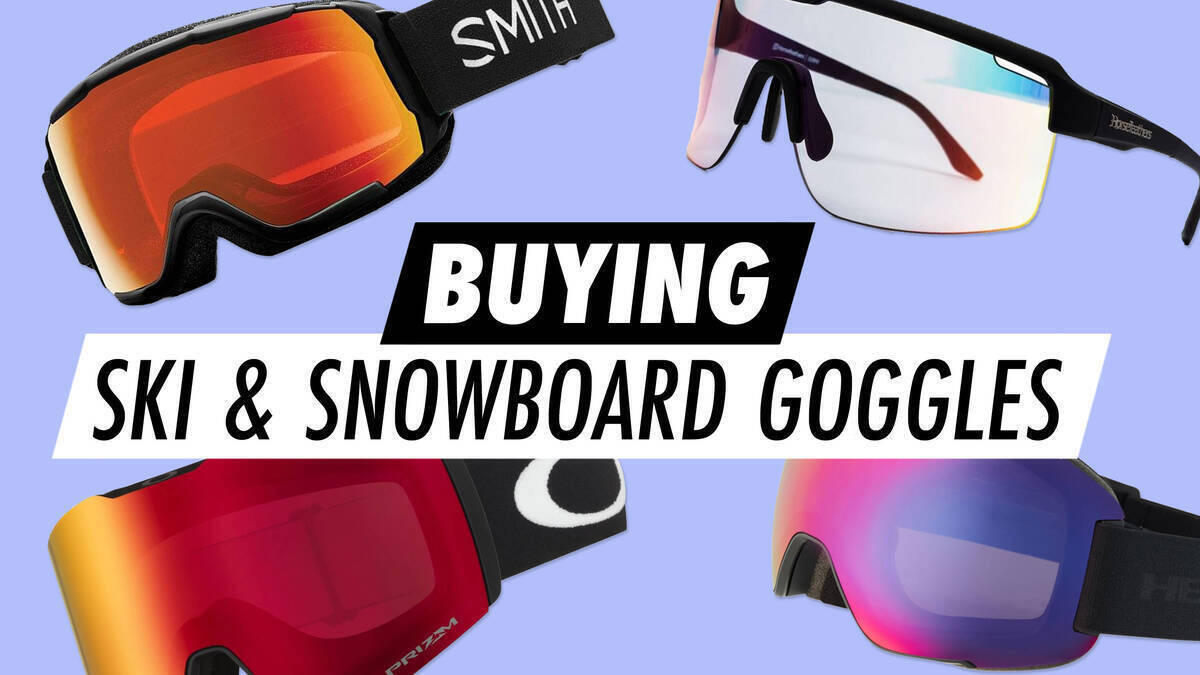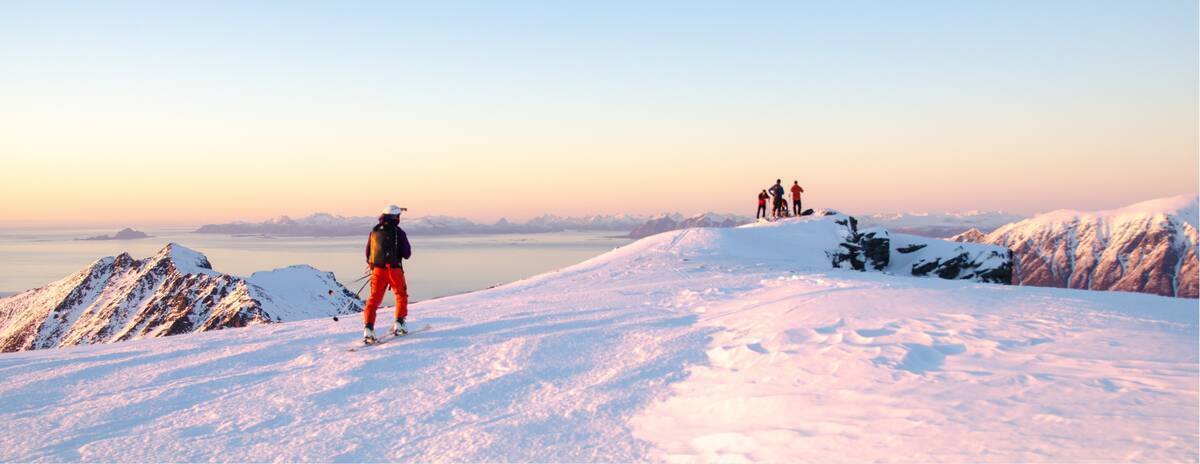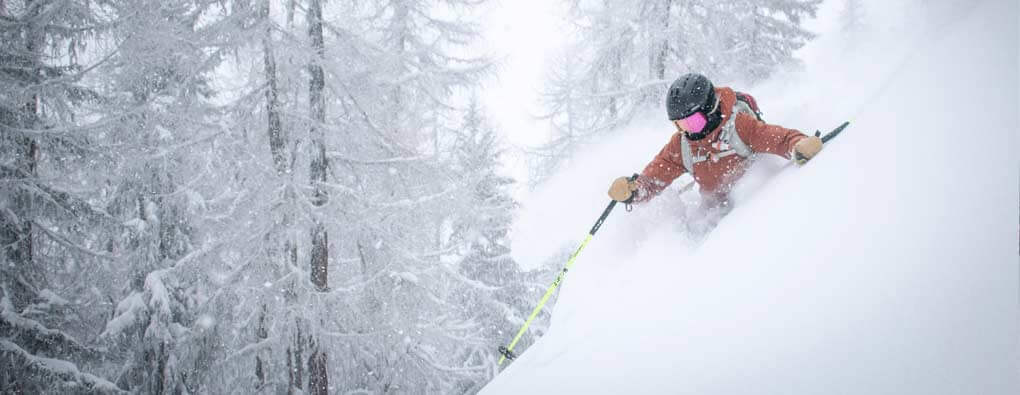How to Choose Ski Goggles

Choosing the right ski goggles is essential for a safe, comfortable, and enjoyable time on the slopes. Whether you're skiing or snowboarding, goggles are not just an accessory – they’re vital for protecting your eyes from wind, snow, and harmful UV rays.
The most important aspects of choosing ski goggles are:
- Visible Light Transmission (VLT)
- Ski goggle size
Here, you’ll get all the advice needed to select the right snow goggles for your needs.
Overview
What Is VLT? (Visible Light Transmission)

You have most likely come across the term ‘VLT’ while researching goggles, but what does VLT mean? VLT, or Visible Light Transmission, measures the percentage of light that passes through the lens. In other words, VLT is a critical factor in choosing ski goggles because it directly affects your vision in different light conditions.
- High VLT (50-90%): These lenses let in more light, making them perfect for low-light conditions like cloudy days or nighttime skiing.
- Medium VLT (20-50%): Versatile for mixed or variable conditions.
- Low VLT (5-20%): Best for sunny, blue-sky days as they block out most light and reduce glare.
For quick reference, consult our ski goggles VLT chart get the right goggle lenses for your needs.

How to Find the Right Goggle Size

A snug, comfortable fit is crucial for ski goggles and snowboard goggles. Ill-fitting goggles can let in snow or fog up, ruining your day on the slopes. Choosing goggle size is a matter of matching the size of the frames with the size of your face. The following pointers are a good starting point:
- Small: Best for children, teens, or adults with smaller faces.
- Medium: Works for most people.
- Large: Designed for individuals with larger faces or those who prefer bigger framed goggles for maximum field of vision.
Goggle Size and Fit
Choose goggles with lenses that are large enough to avoid seeing their edges. If your vision feels restricted, your goggles may be too small. For the best experience, opt for lenses that provide a clear view of your surroundings, including your peripheral vision.
Ski goggles with large spherical lenses typically offer a wide, unobstructed field of view, allowing you to take in the slopes with ease.
OTG - Over the Glasses
OTG snow goggles are designed for people who wear prescription glasses to have a comfortable and hassle free skiing experience. They have a large frame and specialized foam cutouts that allow your prescription glasses to sit comfortably underneath. With OTG snow goggles you can ski without worrying about vision or fit.
Ski Goggle Lens Colors
Different lens colors serve different purposes. While the VLT-number is the easiest way to make sure that you get the right lenses, lens-color and/or reflectivity is also a great indicator. Here’s a quick ski goggle lens color guide:
- Yellow/Gold/Amber: These colors enhance contrast and are excellent for overcast or flat light conditions. They’re among the best goggles for cloudy conditions.
- Rose/Pink: Great for improving depth perception in low-light and cloudy weather. Ideal for mixed conditions.
- Dark Tints (Black/Brown/Grey): Perfect for bright, sunny days as they reduce glare and eye strain.
- Mirrored/Reflective Coatings: These lenses handle high-intensity sunlight well, making them a favorite for bluebird days.
Keep in mind that many modern goggles offer interchangeable lenses, allowing you to switch based on the day’s conditions.
Anti-Fog Technologies
Don’t let fogged-up lenses ruin your precious time on the slopes. Modern ski goggles incorporate advanced anti-fog technology to address this issue effectively. Here are some key features to look for:
- Anti-fog coating: Many goggles come with a special coating on the inside of the lens that minimizes condensation and prevents fog buildup.
- Double-layered lenses: Dual-layer lenses create a thermal barrier that reduces the chances of fogging by maintaining a more consistent temperature.
- Ventilation systems: Goggles with strategically placed vents promote airflow and help keep the lenses clear in various conditions.
To maximize the effectiveness of anti-fog features, avoid touching or wiping the inside of the lens, as this can damage the coating. Pairing your goggles with a compatible helmet can also improve airflow and reduce fogging.
Caring for Your Goggles
Proper care can extend the life of your goggles and ensure they perform their best on every trip. Here are some essential tips for cleaning, preventing scratches, and storing your goggles:
- Cleaning your ski goggles: Use a soft, microfiber cloth to clean your lenses. Avoid using paper towels or any other material as they will leave scratches. Do not wipe the inside of your goggles, as it will destroy the delicate antifog coating. If it happens to get wet on the inside, wait for it to dry if possible - if you must, dab the inside gently with your clean microfiber cloth.
- Avoiding scratches: Handle your goggles by the frame, not the lens, and never place them lens-side down on hard surfaces. Use a protective goggle cover when they’re not in use.
- Storage while on the slopes: When taking a break on the slopes, store your goggle with your goggle cover on or inside a microfiber cloth bag.
- Off-Season Storage: After the season ends, clean your goggles thoroughly and store them in a hard case to protect them from dust and damage. Keep them in a cool, dry place away from direct sunlight, which can degrade the materials over time.
By following these care tips, your goggles will remain clear, scratch-free, and ready for action, ensuring you get the most out of your investment.
